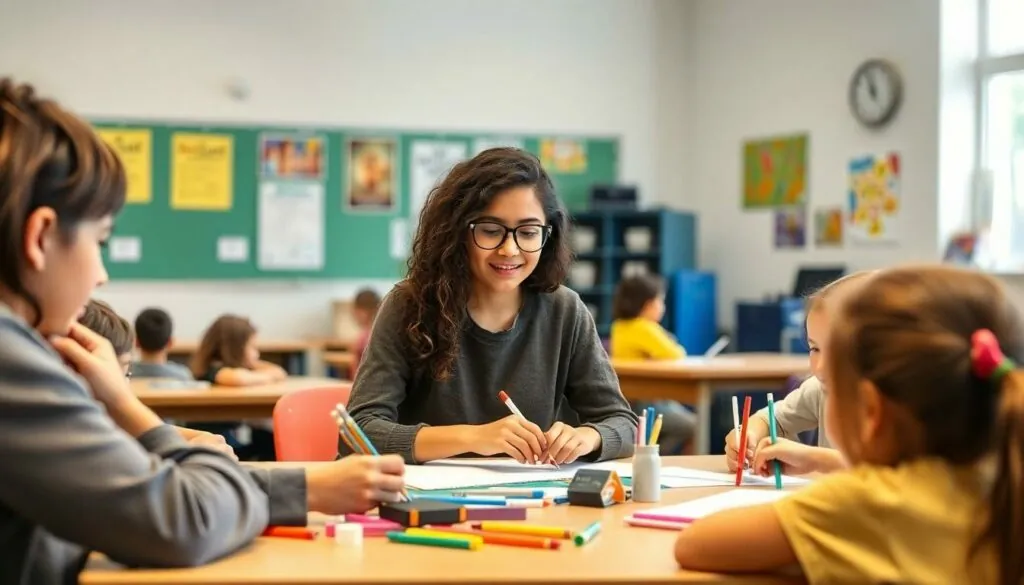Traditional education isn’t everyone’s cup of tea, and that’s perfectly okay! Alternative schools offer a refreshing departure from conventional classroom settings, providing students with unique approaches to learning that better match their individual needs and learning styles.
These innovative educational institutions break free from the one-size-fits-all model that’s dominated education for centuries. Whether it’s Montessori methods, project-based learning, or specialized programs for gifted students, alternative schools embrace diverse teaching philosophies that can transform a struggling student into a confident learner. They’re designed to support students who might find themselves swimming against the current in traditional schools, offering them a chance to thrive in an environment that celebrates their differences.
Table of Contents
ToggleUnderstanding Alternative Schools and Their Purpose
Alternative schools offer specialized education programs designed for students who experience challenges in traditional academic settings. These institutions customize their teaching methods to accommodate diverse learning styles while maintaining high academic standards.
Key Characteristics of Alternative Education
Alternative education programs emphasize individualized learning paths through smaller class sizes, typically 15 students or fewer. Students receive personalized attention with flexible scheduling options that accommodate different learning paces. The curriculum integrates hands-on activities, experiential learning opportunities and real-world applications. Teachers use multiple assessment methods beyond standardized testing, including portfolios, presentations and project demonstrations. These schools create supportive environments that promote social-emotional development alongside academic growth.
Types of Alternative School Programs
Alternative schools encompass various specialized programs tailored to specific student needs:
- Montessori Schools: Focus on self-directed learning through hands-on materials and mixed-age classrooms
- Waldorf Education: Integrates arts, movement and practical skills with academic subjects
- Democratic Schools: Empower students through shared decision-making and self-directed study
- Therapeutic Programs: Combine academic instruction with emotional and behavioral support
- Career Technical Schools: Provide vocational training alongside traditional academics
- Recovery Programs: Support students returning to education after dropping out
- Virtual Schools: Deliver curriculum through online platforms with flexible scheduling
Each program type maintains specific teaching methodologies and learning environments aligned with their educational philosophy and student population needs.
Curriculum and Teaching Methods
Alternative schools implement specialized educational approaches that differ from traditional classroom instruction. The curriculum emphasizes experiential learning methods combined with personalized academic strategies to meet diverse student needs.
Project-Based Learning Approach
Project-based learning forms the core of alternative school education. Students engage in real-world projects that integrate multiple subjects while developing critical thinking skills. A typical project spans 4-6 weeks focusing on topics like environmental conservation renewable energy systems or community development initiatives. Students work in small groups of 3-5 members collaborating on research data collection analysis presentation. This hands-on approach connects theoretical concepts to practical applications through:
- Creating documentary films about local social issues
- Designing sustainable garden systems for the school
- Developing entrepreneurial ventures with community partners
- Building functional prototypes to solve identified problems
Individualized Learning Plans
Each student receives a customized learning plan tailored to their academic goals abilities. Teachers assess student progress through portfolio evaluations performance tasks ongoing observations. The learning plans include:
- Personalized academic benchmarks tracked through digital platforms
- Weekly one-on-one meetings with academic advisors
- Flexible scheduling options for completing coursework
- Modified assessment methods based on learning styles
- Integration of student interests into core subjects
- Regular plan adjustments based on progress data
Progress tracking occurs through competency-based assessments rather than traditional grading systems measuring mastery of specific skills concepts.
Benefits of Alternative Education
Alternative education provides customized learning experiences that address individual student needs through specialized programs. These educational settings offer distinct advantages that support both academic achievement and personal growth.
Personalized Academic Support
Alternative schools maintain a 12:1 student-teacher ratio, enabling educators to provide individualized attention to each student. Teachers create custom learning plans that align with students’ interests, abilities and goals. Students receive targeted instruction in core subjects through daily one-on-one sessions with subject specialists. Progress monitoring occurs weekly through portfolio reviews, competency demonstrations and project assessments rather than traditional tests. This personalized approach allows students to master concepts at their own pace while building academic confidence.
Social-Emotional Development
Alternative schools integrate social emotional learning throughout the curriculum to support student wellbeing. Students participate in daily advisory groups of 8-10 peers to develop communication skills and emotional awareness. The supportive environment encourages self expression through creative arts, mindfulness practices and group projects. Regular counseling services help students process challenges, set goals and build resilience. By focusing on the whole child, alternative programs foster positive relationships, self advocacy abilities and emotional intelligence that transfers beyond the classroom.
Who Alternative Schools Serve
Alternative schools serve a diverse student population with unique educational requirements that extend beyond traditional classroom settings. These institutions provide specialized support systems designed to meet specific learning needs through targeted interventions.
Students With Different Learning Styles
Alternative schools accommodate multiple learning modalities including visual spatial learners who process information through images, kinesthetic learners who grasp concepts through physical activities, and auditory learners who excel with verbal instruction. Students with processing speed variations receive extended time accommodations to complete assignments at their optimal pace. The curriculum incorporates multi sensory learning techniques such as hands-on experiments, artistic expression activities, and digital technology tools. Teachers use differentiated instruction methods to present material in various formats, ensuring each student engages with content effectively.
At-Risk Youth and Special Populations
Alternative schools provide targeted support for students facing academic challenges, behavioral concerns, or social emotional difficulties. These institutions serve youth who experience attendance issues, credit deficiencies, or struggles with traditional classroom environments. Programs accommodate students with documented disabilities through specialized instruction and therapeutic services. English language learners receive intensive language support alongside content area instruction. The schools maintain connections with community resources to address factors affecting student success including housing instability, mental health needs, and family support services. Small class environments enable teachers to identify early warning signs and implement immediate interventions.
Comparing Traditional vs Alternative Schools
Traditional schools operate with standardized schedules and curriculum models, while alternative schools focus on customized learning paths tailored to individual student needs.
Academic Structure Differences
Traditional schools follow a fixed bell schedule with 50-minute class periods, standardized curriculum sequences across subjects and strict grade-level progressions. Alternative schools implement flexible 90-minute learning blocks, thematic units integrating multiple subjects and multi-age groupings based on skill level rather than age. The physical setup differs significantly – traditional classrooms arrange 25-30 desks in rows facing the teacher, whereas alternative spaces create learning zones for 12-15 students with movable furniture configurations. Traditional schools emphasize teacher-directed instruction and textbook learning, while alternative programs incorporate project work stations, technology centers and collaborative spaces that support hands-on exploration through varied learning modalities.
Student Assessment Methods
Alternative schools utilize portfolio-based assessments that showcase student work samples, project outcomes and skill demonstrations across subjects. Progress tracking involves weekly conferences between students and advisors to review learning goals, while traditional schools rely on letter grades from tests and assignments every 6-9 weeks. Alternative assessment includes performance tasks, oral presentations and collaborative projects graded on competency-based rubrics. Traditional models focus on standardized test scores and grade point averages as primary measures of achievement. Alternative schools document growth through digital portfolios containing work artifacts, reflection journals and skill mastery evidence that students curate to demonstrate their learning journey.
Success Stories and Outcomes
Alternative schools demonstrate measurable success in transforming educational outcomes for students who previously struggled in traditional settings. These institutions track comprehensive data points to validate their effectiveness in supporting diverse learners.
Academic Achievement Results
Students in alternative education programs show significant academic improvements across multiple metrics. The average GPA increase among alternative school students rises from 1.8 to 2.9 within the first academic year. Portfolio assessments indicate 85% of students meet or exceed grade-level standards in core subjects after two years. Standardized test scores reflect a 40% improvement in math proficiency and a 35% increase in reading comprehension. Alternative schools report a 92% completion rate for student projects with real-world applications.
| Academic Metric | Before | After |
|---|---|---|
| Average GPA | 1.8 | 2.9 |
| Grade-Level Standards | 45% | 85% |
| Math Proficiency | 35% | 75% |
| Reading Comprehension | 40% | 75% |
Student Transition Rates
Alternative school graduates demonstrate strong post-program success rates. Data shows 78% of students successfully transition back to traditional schools or advance to higher education. Employment tracking reveals 82% of career-focused program graduates secure positions in their field of study within 6 months. College matriculation rates reach 65% for alternative school graduates compared to their previous trajectory of 25%. Students from therapeutic programs show 88% retention in their chosen educational or career paths.
| Transition Type | Success Rate |
|---|---|
| Traditional School/Higher Ed | 78% |
| Career Program Employment | 82% |
| College Matriculation | 65% |
| Program Path Retention | 88% |
Conclusion
Alternative schools represent a transformative approach to education that’s proving highly effective for students who need something different. Their commitment to personalized learning flexible scheduling and innovative teaching methods creates an environment where diverse learners can truly thrive.
The success rates speak volumes with significant improvements in academic performance and post-graduation outcomes. These institutions aren’t just an alternative – they’re a powerful solution that’s changing lives and reshaping educational possibilities for students across the country.
Students parents and educators seeking a more individualized approach to learning will find that alternative schools offer a viable path to academic success and personal growth. It’s clear that these specialized educational environments are making a real difference in helping students reach their full potential.






